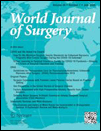Role of Central Hypo-enhancement in the Hepatic Arterial Phase of Dynamic Computed Tomography in Patients with Mass-Forming Intrahepatic Cholangiocarcinoma
Abstract
Background/Purpose
The enhancement pattern in the hepatic arterial phase (HAP) of dynamic computed tomography (CT) is reportedly a prognostic marker in patients with intrahepatic cholangiocarcinoma (IHCC). This study was performed to clarify the significance of central hypo-enhancement in the HAP in patients with mass-forming IHCC.
Methods
Forty patients who had undergone initial surgical resection for mass-forming IHCC were enrolled. The dynamic CT was scanned 40 s after contrast agent injection as the HAP. A radiologist classified the patients into three groups based on the vascular pattern: the hyper-enhancement group (Hyper group), rim-enhancement group (Rim group), and hypo-enhancement group (Hypo group). The surgical specimens were immunohistochemically stained for hypoxia-inducible factor 1 (HIF-1). The correlation with clinicopathological findings and HIF-1 expression was investigated.
Results
The Hyper, Rim, and Hypo groups comprised 8, 7, and 25 patients, respectively. There were no significant correlations between the groups and clinicopathological factors. Overall survival (OS) was significantly worse in the Hypo than in the Hyper group (p = 0.03). OS was also significantly worse in the Rim + Hypo group (i.e., hypo-enhancement in the central tumor) than in the Hyper group (p = 0.04). Furthermore, inclusion in the Rim + Hypo group was a prognostic factor for OS (hazard ratio 6.68). High HIF-1 expression in the central part of the tumor was correlated with central hypo-enhancement (Hyper group: 25% and Rim + Hypo group: 72%).
Conclusions
Central hypo-enhancement was a prognostic factor in patients with IHCC. The high malignant potential of tumors with central hypo-enhancement might be associated with HIF-1 upregulation.




